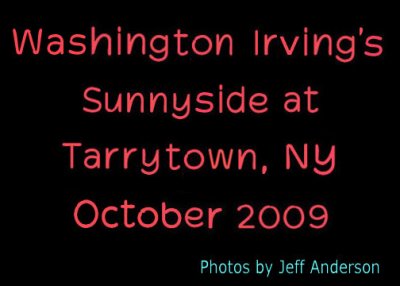
Washington Irving's Sunnyside at Tarrytown, NY cover page. |
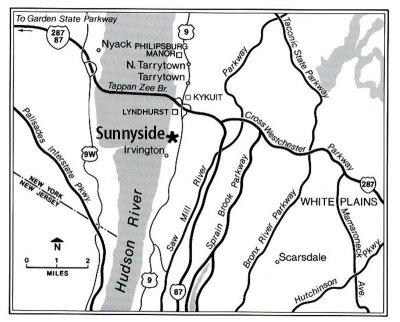
Hudson Valley map showing Tarrytown and Sunnyside, indicated by the star. |
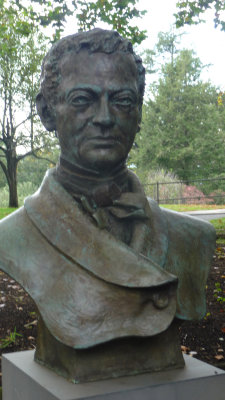
Statue of Washington Irving at Sunnyside. |

This is the original road that one took to Washington Irving's house in the 19th century. |

Entrance and gate to Sunnyside with the Hudson River in the background. |
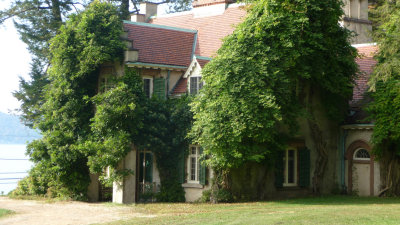
View of the house after coming through the entrance. |
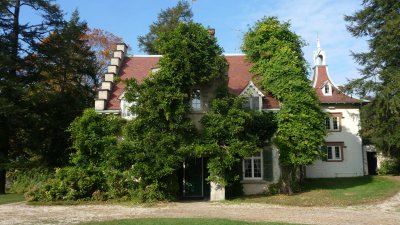
As in Washington Irving's time, the house is still covered with wisteria. |
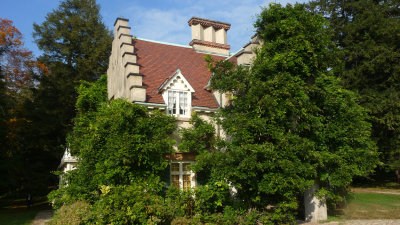
Irving wrote about the house, "My idea is to make a little nookery somewhat in the Dutch style, quaint, but unpretending." |
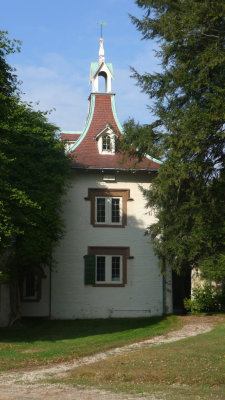
The romantic Spanish tower make Sunnyside instantly recognizable. |
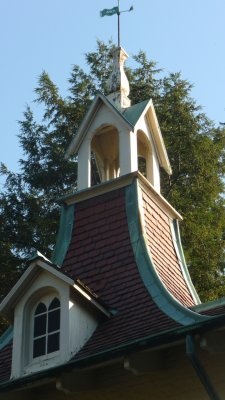
Close-up of the Spanish tower. |
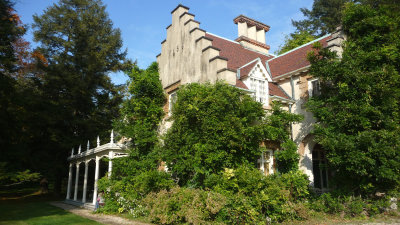
Dutch-style stepped edge of the roof. |

Sunnyside started before Washington Irving when Wolfert Acker, who was Dutch, built a cottage called "Wolfert's Roost" in 1656. |
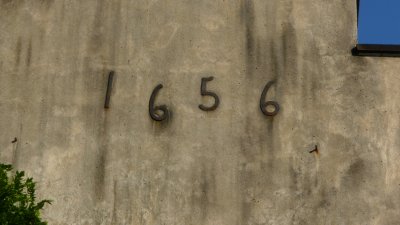
It is dubious that this date is accurate, though, since this may not be the same house that belonged to Acker. |
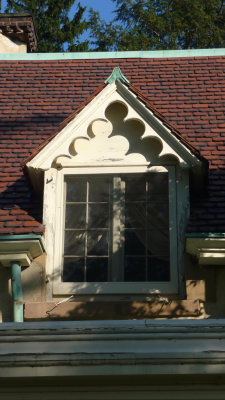
Decorative trim over a second floor window. |
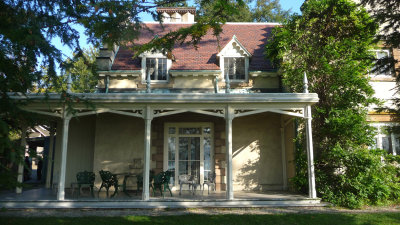
Sunnyside's porch faces the Hudson River. |
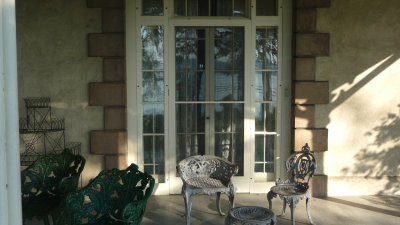
The door from the porch was often left open during the warmer months. |
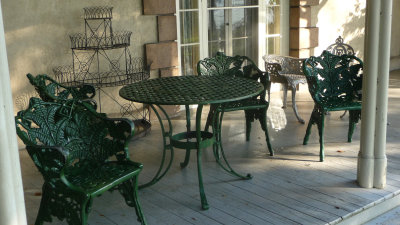
Porch furniture for Irving and his family to enjoy the outdoors and the Hudson River view. |

A rear view of Sunnyside with the Spanish tower in view. |
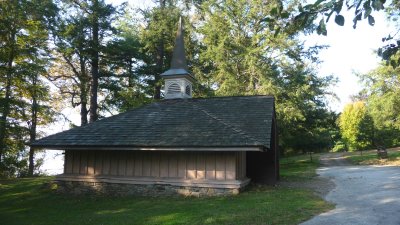
I could not imagine what this small, low building was for. |

It is the Ice House where ice was kept frozen for most of the year. |
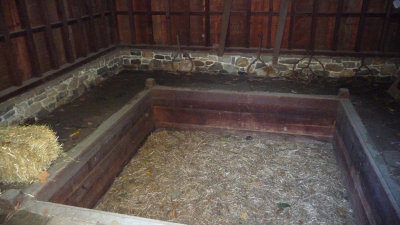
Blocks of ice were buried under the straw in the winter to keep them from melting when it the seasons changed. |

The rustic bridge at Sunnyside. The bridge and landscaping reflected Irving’s romantic view of life. |











